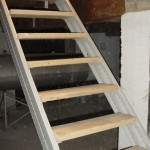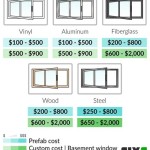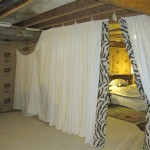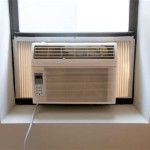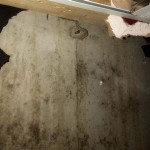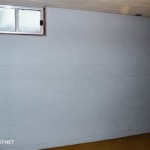Covers For Basement Window Wells Egress: Ensuring Safety and Compliance
Basement window wells introduce natural light and ventilation into below-ground living spaces. However, they also present safety concerns, particularly regarding egress during an emergency and potential hazards relating to water accumulation and debris. Selecting appropriate covers for basement window wells, especially those designated as egress windows, is crucial for homeowner safety and regulatory compliance. This article explores the importance of proper window well covers, focusing on their impact on egress, safety, and compliance with building codes.
Egress windows serve as emergency exits from basements in the event of fire or other dangerous situations. Building codes mandate specific dimensions and accessibility requirements for egress windows to ensure occupants can safely escape. Window wells are often necessary to meet the dimensional requirements for egress windows, especially when the surrounding ground is above the window's sill. Consequently, the window well and its cover must not impede egress in any way. Covers that are too heavy, difficult to open, or lack proper support can negate the purpose of the egress window, potentially trapping occupants inside during an emergency.
Understanding Egress Window Requirements and Window Well Considerations
The International Residential Code (IRC) provides specific criteria for egress windows. These requirements include minimum window size, sill height above the floor, and operability. A clear understanding of these specifications is vital when selecting window well covers, as the cover must not obstruct the required clear opening. The IRC also stipulates that window wells serving egress windows must have a minimum horizontal projection and width. These dimensions are intended to provide sufficient space for an individual to climb out of the well. Consequently, the design and placement of the cover must not encroach upon this essential space.
In addition to meeting dimensional requirements, an egress window and its associated window well must be easily operable from the inside without requiring special tools or knowledge. This requirement extends to the window well cover. Homeowners should avoid covers that are difficult for children, the elderly, or individuals with disabilities to operate. Complex latching mechanisms, excessive weight, or poor design can all hinder egress. Inspection and maintenance of window well covers is also crucial. Regular checks can identify potential problems, such as rust, corrosion, or malfunctioning hinges, allowing for timely repairs or replacements and ensuring continued operability.
Furthermore, local building codes may have additional or more stringent requirements regarding egress windows and window well covers. It is essential to consult local authorities and building inspectors to ascertain specific regulations applicable to the property's location. Failure to comply with these codes can result in fines, legal liabilities, and, most importantly, a compromised safety environment for the occupants.
Choosing the right material for the window well cover is another crucial consideration. Durable and weather-resistant materials are essential to withstand the elements and maintain structural integrity over time. Common options include polycarbonate, metal grates, and custom-built structures. Polycarbonate covers are lightweight, transparent, and impact-resistant, allowing natural light to penetrate the basement while providing protection from debris and weather. Metal grates offer robust protection and security but may obstruct light transmission. Custom-built covers can be designed to meet specific aesthetic or functional requirements but may require professional installation and maintenance.
The Role of Window Well Covers in Preventing Falls and Injuries
Window wells, especially those without covers, pose a significant fall hazard, particularly for children and pets. The depth of the well can result in serious injuries if someone accidentally falls into it. Covers provide a physical barrier, preventing accidental falls and minimizing the risk of injury. The design of the cover should prioritize safety, featuring a secure and stable structure that can support the weight of an individual without collapsing or shifting. The cover surface should also be slip-resistant, preventing slips and falls during wet or icy conditions.
The spacing between the bars or openings in a grate-style cover should be narrow enough to prevent small children or pets from falling through. Regular inspection of the cover is essential to identify any signs of damage, such as cracks, rust, or loose fasteners. Prompt repairs or replacements can maintain the cover's integrity and prevent potential accidents. Furthermore, homeowners should consider installing warning signs or perimeter fencing around window wells to further enhance safety, especially if young children or individuals with impaired mobility reside in the home.
In addition to preventing falls, window well covers can also deter unauthorized access to the basement. A secure cover can discourage intruders from attempting to enter the home through the window well, adding an extra layer of security. Covers made of durable materials, such as steel or reinforced polycarbonate, offer greater resistance to forced entry. Consider covers with locking mechanisms or tamper-resistant fasteners to further enhance security. Connecting the window well cover to a home security system can provide an added level of protection, alerting homeowners to any unauthorized attempts to remove or tamper with the cover.
Regular maintenance of the window well itself is also critical for preventing injuries. Debris accumulation, such as leaves, branches, and trash, can create slippery surfaces and obscure potential hazards. Cleaning the window well regularly can reduce the risk of falls and ensure that the egress window remains unobstructed. Installing drainage systems within the window well can also help to prevent water accumulation, which can lead to slippery conditions and damage to the foundation.
Ensuring Proper Drainage and Preventing Water Damage
Water accumulation in window wells can lead to a range of problems, including basement flooding, foundation damage, and mold growth. Window well covers play a crucial role in preventing water from entering the well, thus mitigating these risks. A properly designed cover should effectively shed rainwater and snow, directing it away from the window and foundation. The cover should also be sloped or angled to facilitate water runoff and prevent ponding.
In addition to the cover itself, proper drainage within the window well is essential. A well-drained window well will quickly channel water away from the foundation, preventing it from seeping into the basement. Consider installing a gravel bed at the bottom of the well to promote drainage. The gravel should be coarse and porous, allowing water to percolate through it easily. Connecting the window well to a drainage system, such as a French drain or a sump pump, can provide an even more effective solution for managing water accumulation.
Regular inspection and maintenance of the window well and its drainage system are essential for preventing water damage. Check for clogs or obstructions in the drainage pathways and clear them promptly. Ensure that the window well cover is properly sealed and that there are no gaps or cracks that could allow water to enter. Consider applying waterproof sealant to the foundation walls around the window well to further protect against water intrusion. Monitoring the basement for signs of dampness or water damage is crucial for early detection of potential problems. Addressing these issues promptly can prevent costly repairs and maintain the integrity of the foundation.
Furthermore, consider the local climate and weather patterns when selecting a window well cover. In areas with heavy snowfall, choose a cover that can withstand the weight of accumulated snow without collapsing or buckling. In areas prone to heavy rainfall, ensure that the cover provides adequate protection against water intrusion. In areas with extreme temperature fluctuations, select a cover made of materials that are resistant to cracking or warping under extreme conditions. Consulting with a qualified contractor or building professional can help you choose the right window well cover for your specific needs and climate.
In summary, covers for basement window wells, particularly those associated with egress windows, are crucial for safety, compliance, and the prevention of water damage. Selecting covers that meet egress requirements, prevent falls, and facilitate proper drainage is essential for protecting occupants and maintaining the structural integrity of the home. Regular inspection and maintenance of the window well and its cover are crucial for ensuring continued safety and functionality.

Egress Window Well Covers Solutions Llc

Window Well Covers Basement Grates
Egress Safety Features Rockwell Window Wells

Stay Safe And Secure With Window Well Covers Rio Grande Co

Guardian Heavy Duty Custom Egress Window Well Covers Made In U S A

What Exactly Are Egress Window Well Covers

Rectangular Well Cover Ideas Windowell Expressions

Window Well Cover Wellcraft 2062 Small Polycarbonate Flat Mainline Materials

Window Wells Covers Steelway Cellar Doors Rectangular Cornered More

How Window Well Covers Improve Basement Security
Related Posts
